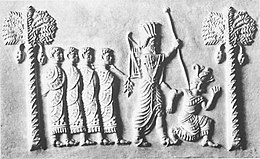Welcome, history enthusiasts, to “Top Ten Egypt”! Today, we delve into the captivating era of Ancient Egypt’s 27th Dynasty—a period defined by the influence of the mighty Persian Empire. Join us as we uncover the story of this intriguing chapter in Egypt’s history, where cross-cultural dynamics and political realignments shaped the ancient realm.
The 27th Dynasty: Persian Dominion:
The 27th Dynasty of Ancient Egypt, also known as the First Persian Period, spanned from approximately 525 to 404 BCE. This era marked a significant turning point in Egyptian history, as the Persian Empire, under the Achaemenid rulers, exerted its dominance over the lands of the Nile. Let us explore the impact of this era, characterized by political shifts and cultural interactions.
The Persian Influence on Egyptian Society:
As the Persians gained control of Egypt, they initiated a series of administrative and cultural changes throughout the kingdom. Persian governors, known as satraps, were appointed to oversee various regions. They introduced new administrative practices, taxation systems, and the use of the Aramaic script alongside traditional hieroglyphs. While Persian influence was evident, Egypt still retained its distinct cultural identity.
Cross-Cultural Exchange and Artistic Synthesis:
The Persian rulers of the 27th Dynasty facilitated a profound cross-cultural exchange between Egypt and the Persian Empire. This intermingling of artistic traditions resulted in distinctive syntheses in art and architecture. Egyptian motifs fused with Persian influences, giving rise to unique artistic expressions seen in reliefs, statues, and temple structures. This cultural fusion reflected the cosmopolitan nature of the time.
The Royal Tombs of the Pharaohs:
The 27th Dynasty is known for the magnificent royal tombs that housed the pharaohs of this era. The necropolis at Saqqara, particularly the tomb of Psamtik II, showcases the striking blend of Egyptian and Persian architectural elements. These tombs served as elaborate resting places for the pharaohs and provide valuable insights into the cultural exchange and artistic synthesis of the period.
Political Realignments and Regional Dynamics:
The Persian domination of Egypt during the 27th Dynasty significantly shaped political alliances and regional dynamics. Egypt became an integral part of the vast Persian Empire, influencing foreign policies and trade routes. Persian control brought both stability and challenges, as local Egyptian elites navigated the balance between maintaining their heritage and embracing the overlords’ authority.
Decline and Legacy:
Over time, the Persian grip on Egypt weakened, and internal power struggles emerged, leading to the eventual decline of the 27th Dynasty. Nonetheless, this period left a lasting legacy of cultural intermingling and distinctive architectural styles that influenced subsequent eras of Egyptian history, demonstrating the resilience and adaptability of the ancient civilization.
As we conclude our exploration of Ancient Egypt’s 27th Dynasty, we recognize the profound impact of Persian influence on the kingdom’s history. This era stands as a testament to the intricate web of cross-cultural dynamics, political realignments, and artistic synthesis that shaped Egypt’s ever-evolving identity.
Join “Top Ten Egypt” as we uncover the remnants of the 27th Dynasty and witness the mesmerizing fusion of Egyptian and Persian influences. Discover the royal tombs, architectural marvels, and engage with the stories that encapsulate this captivating era of Ancient Egypt.
Stay tuned, as “Top Ten Egypt” continues to unravel Egypt’s rich history, offering a gateway to the wonders and mysteries of this extraordinary land.



Comment (0)